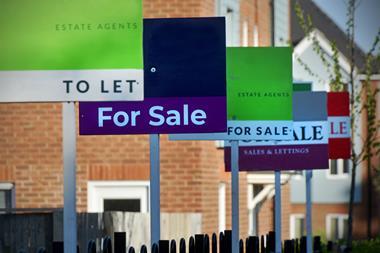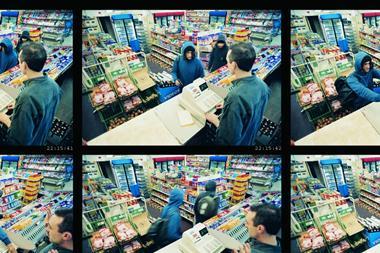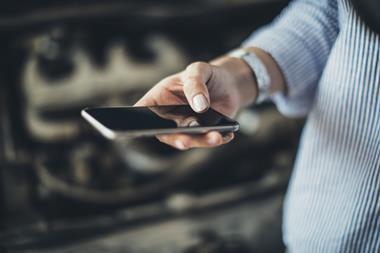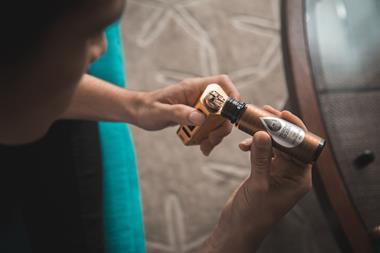When it comes to increasing basket spend, symbol groups are falling over themselves to get customers to spend more. "Shoppers spend a relatively low amount in convenience stores but a vast amount elsewhere, often on products that are sold or could be sold within smaller stores," says Adam Margolin, head of marketing support at Spar UK. The group is spending £5m on marketing this year, focusing heavily on in-store and digital campaigns in a bid to increase basket spend.
Meanwhile, Booker Premier spent the early part of the summer enticing customers to buy more by rewarding them with scratchcards for transactions over £5.
And, as its name would suggest, Costcutter has been competing hard on pricing in order to increase customer spending. In May, the group announced record-breaking sales figures, claiming that shoppers were increasing their basket spend having reassessed convenience stores and realised that they were more competitive on price than originally perceived.
Data from research consultancy HIM's Convenience Tracking Programme (CTP) shows that c-store basket spend figures are already headed in the right direction with consumers regularly spending more than they'd intended. In 2010, the average intended spend in convenience stores was £5.06, but the average actual spend was £5.31.
And there are still plenty of chances for retailers to improve on this with over four fifths (82%) of retailers saying that increasing customer spend is a key area of opportunity for them.
In order to get a good feel for how to increase basket spend, Costcutter trading and marketing director Angela Barber claims that viewing the store from the eyes of the shopper is very important. "The first thing to do is to look at your store and ask yourself: 'How are the store's standards? Have I got a bright, clean shop?' If a customer goes into a nice store environment they are more likely to spend more."
Edinburgh-based retailer Dennis Williams found that improving his shopping environment made a big difference to basket spend when he refitted his store at the beginning of the year. "We felt our aisles were too narrow and we wanted to give our customers more room to shop to ensure that they were comfortable." Since the refit, which included installing wider aisles, and relaying the flooring, average basket spend is £4.94, up 11.4% on the same quarter last year.
While the amount that a shopper spends in store is often referred to as 'basket spend', the reality is that many convenience store customers don't bother with baskets as they only intend to buy one or two items. However, some shrewd basket positioning can actually encourage customers to pick up a basket, increasing the likelihood of them buying more products.
"We encourage our retailers to make sure they have a stack of baskets not only at the entrance to the store, but also in the store itself near the milk, and alcohol facings," says Barber. "Psychologically this can encourage them to spend a bit more because they are not limited then to what they can hold in their hands. For the same reason, it's a good idea to put six-bottle wine holders in the wine area."
HIM concurs that encouraging customers to use baskets is a good idea. Marketing manager Georgina Wild says: "We know when shoppers have a basket they buy more items. Basket stands should be placed at various points throughout the store. You could even trial having a member of staff at the entrance handing out baskets as shoppers enter."
The positioning of products can also make a big difference to whether or not customers bother to pick them up. "If we have killer offers we build floor stacks," says Budgens retailer Paul Gardner from Islington, North London. "We situate them as close to the entrance as possible that way people can't miss them."
Pinda Cheema, whose family runs Malcolm Stores in Coventry, has also found this technique to be successful.
"We've got fresh pizzas in the fridge and next to that we've got garlic bread at £1. Above it we've got bags of salad. We've also got chicken samosas and bhajis above our Indian ready meals. You have to build appetite. Some people just come in for a paper and end up buying lots of extra products."
Promotions are, of course, another key way to up the average spend. Pinda says regular promotions on basic items ensure consumers end up topping up on staples while buying the products they originally intended. "We have Heinz beans and soups on offer as well as the main cereals cornflakes and Weetabix and sugar," he says.
Pinda also promotes multibuys on frozen meals to encourage shoppers to pick up several, rather than just one. "At the moment we have Just Cook herb chicken breast, or beef, or meatballs on two for £5."
Multibuy promotions can also be effective in increasing snack purchases, claims Booker retail sales director Steve Fox. "We have just launched a range of snacks priced at 59p for a single pack or two for £1. A multiple purchase offers a saving for the consumer and an increase in basket spend for the retailer."
Staff interaction can further help to highlight good deals. "Retailers can ask shoppers at the checkout if they found everything they were looking for, or they could adopt the approach of WHSmith and up-sell promotional lines at the till," says HIM's Georgina Wild. "In addition, if you start stocking a new line, tell shoppers: 'Did you know we now stock this?'"
Paul is certainly working this technique to his advantage. "I encourage staff to work product offers into conversations with shoppers. For example, I once noticed that we were selling Finish dishwasher tablets for a fiver, whereas Tesco was selling them for over £10, so I told staff to mention this to customers if they could."
Retailers can even use basket spend as an incentive for staff, he explains. "I use it to encourage staff to up their game. It means much more to people to let them know the average basket spend each week, rather than just the turnover."
So there you have it, by embracing a few smart initiatives you can get customers to put all their eggs in your basket!
Meanwhile, Booker Premier spent the early part of the summer enticing customers to buy more by rewarding them with scratchcards for transactions over £5.
And, as its name would suggest, Costcutter has been competing hard on pricing in order to increase customer spending. In May, the group announced record-breaking sales figures, claiming that shoppers were increasing their basket spend having reassessed convenience stores and realised that they were more competitive on price than originally perceived.
Data from research consultancy HIM's Convenience Tracking Programme (CTP) shows that c-store basket spend figures are already headed in the right direction with consumers regularly spending more than they'd intended. In 2010, the average intended spend in convenience stores was £5.06, but the average actual spend was £5.31.
And there are still plenty of chances for retailers to improve on this with over four fifths (82%) of retailers saying that increasing customer spend is a key area of opportunity for them.
In order to get a good feel for how to increase basket spend, Costcutter trading and marketing director Angela Barber claims that viewing the store from the eyes of the shopper is very important. "The first thing to do is to look at your store and ask yourself: 'How are the store's standards? Have I got a bright, clean shop?' If a customer goes into a nice store environment they are more likely to spend more."
Edinburgh-based retailer Dennis Williams found that improving his shopping environment made a big difference to basket spend when he refitted his store at the beginning of the year. "We felt our aisles were too narrow and we wanted to give our customers more room to shop to ensure that they were comfortable." Since the refit, which included installing wider aisles, and relaying the flooring, average basket spend is £4.94, up 11.4% on the same quarter last year.
While the amount that a shopper spends in store is often referred to as 'basket spend', the reality is that many convenience store customers don't bother with baskets as they only intend to buy one or two items. However, some shrewd basket positioning can actually encourage customers to pick up a basket, increasing the likelihood of them buying more products.
"We encourage our retailers to make sure they have a stack of baskets not only at the entrance to the store, but also in the store itself near the milk, and alcohol facings," says Barber. "Psychologically this can encourage them to spend a bit more because they are not limited then to what they can hold in their hands. For the same reason, it's a good idea to put six-bottle wine holders in the wine area."
HIM concurs that encouraging customers to use baskets is a good idea. Marketing manager Georgina Wild says: "We know when shoppers have a basket they buy more items. Basket stands should be placed at various points throughout the store. You could even trial having a member of staff at the entrance handing out baskets as shoppers enter."
The positioning of products can also make a big difference to whether or not customers bother to pick them up. "If we have killer offers we build floor stacks," says Budgens retailer Paul Gardner from Islington, North London. "We situate them as close to the entrance as possible that way people can't miss them."
Pinda Cheema, whose family runs Malcolm Stores in Coventry, has also found this technique to be successful.
"We've got fresh pizzas in the fridge and next to that we've got garlic bread at £1. Above it we've got bags of salad. We've also got chicken samosas and bhajis above our Indian ready meals. You have to build appetite. Some people just come in for a paper and end up buying lots of extra products."
Promotions are, of course, another key way to up the average spend. Pinda says regular promotions on basic items ensure consumers end up topping up on staples while buying the products they originally intended. "We have Heinz beans and soups on offer as well as the main cereals cornflakes and Weetabix and sugar," he says.
Pinda also promotes multibuys on frozen meals to encourage shoppers to pick up several, rather than just one. "At the moment we have Just Cook herb chicken breast, or beef, or meatballs on two for £5."
Multibuy promotions can also be effective in increasing snack purchases, claims Booker retail sales director Steve Fox. "We have just launched a range of snacks priced at 59p for a single pack or two for £1. A multiple purchase offers a saving for the consumer and an increase in basket spend for the retailer."
Staff interaction can further help to highlight good deals. "Retailers can ask shoppers at the checkout if they found everything they were looking for, or they could adopt the approach of WHSmith and up-sell promotional lines at the till," says HIM's Georgina Wild. "In addition, if you start stocking a new line, tell shoppers: 'Did you know we now stock this?'"
Paul is certainly working this technique to his advantage. "I encourage staff to work product offers into conversations with shoppers. For example, I once noticed that we were selling Finish dishwasher tablets for a fiver, whereas Tesco was selling them for over £10, so I told staff to mention this to customers if they could."
Retailers can even use basket spend as an incentive for staff, he explains. "I use it to encourage staff to up their game. It means much more to people to let them know the average basket spend each week, rather than just the turnover."
So there you have it, by embracing a few smart initiatives you can get customers to put all their eggs in your basket!
Size matters
One way of getting people to up their spend is simply by removing smaller pack sizes. This tactic has worked a treat for Paul Gardner who owns a Budgens store in Islington.
"We replaced all the smaller Walkers crisps packs with grab bags and no one seemed to notice. We've also replaced all our cans, bar Coca-Cola, with 500ml contour bottles." However, bigger isn't always better. "Musgrave gave us some great offers on lager packs of 15 cans for £16, rather than £24. But being a central London convenience store, people have to commute home after shopping, so they didn't want to carry bulky products."
Angela Barber, trading and marketing director for Costcutter, agrees that larger pack sizes don't always appeal. "It comes down to what the product is, but we still sell more tea bags in 80s rather than 160s," she says. New options are constantly being introduced. Coca-Cola Enterprises (CCE) recently launched a range of four x 330ml can multipacks of Coca-Cola, diet Coke and Coke Zero for independents. Much lighter than the traditional multipacks, CCE has designed them with top-up shoppers in mind.
One way of getting people to up their spend is simply by removing smaller pack sizes. This tactic has worked a treat for Paul Gardner who owns a Budgens store in Islington.
"We replaced all the smaller Walkers crisps packs with grab bags and no one seemed to notice. We've also replaced all our cans, bar Coca-Cola, with 500ml contour bottles." However, bigger isn't always better. "Musgrave gave us some great offers on lager packs of 15 cans for £16, rather than £24. But being a central London convenience store, people have to commute home after shopping, so they didn't want to carry bulky products."
Angela Barber, trading and marketing director for Costcutter, agrees that larger pack sizes don't always appeal. "It comes down to what the product is, but we still sell more tea bags in 80s rather than 160s," she says. New options are constantly being introduced. Coca-Cola Enterprises (CCE) recently launched a range of four x 330ml can multipacks of Coca-Cola, diet Coke and Coke Zero for independents. Much lighter than the traditional multipacks, CCE has designed them with top-up shoppers in mind.






















1 Readers' comment